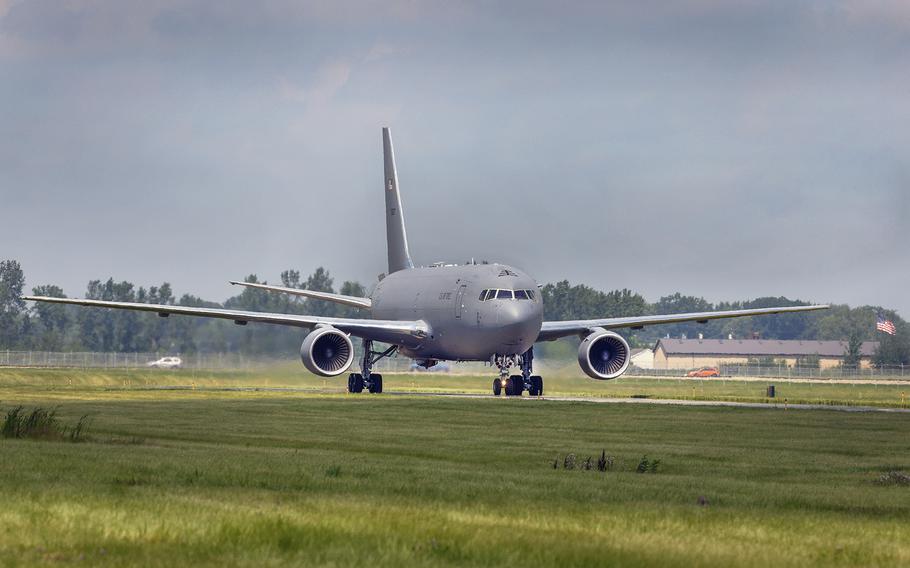
A KC-46A Pegasus taxis in at Selfridge Air National Guard Base, Mich., in July 2021. (Terry Atwell/U.S. Air National Guard)
It’s hard to imagine refueling aircraft with buckets and hoses, but prior to World War II, that was how it was done. Prewar aerial refueling attempts were primitive experiments until a modernized process was introduced in the late 1940s. The U.S. military began the refueling transformation with surplus bombers, including the KB-29 and KB-50. A bulbous fuselage was crafted, resulting in the KC-97 of the 1950s. About 800 were built to sate the B-47 fleet. The B-47 gave way to the B-52, and like the B-17 before it, the U.S. Air Force had yet to recognize the need for a bigger, faster refueling tanker.
It wasn’t until the introduction of the KC-135 Stratotanker in 1957 that aerial refueling truly hit its stride. The new refueling tanker quickly became the backbone of the Strategic Air Command. During the Vietnam War, while I was serving as an aircrew life support specialist, I witnessed 55 KC-135s on rotational assignment during the Christmas Bombings of 1972. It was an incredible sight to see — tankers actively refueling for critical missions between Thailand, Okinawa and Guam.
Aviation technology has developed exponentially since the 1970s, however modern airframes remain viable until they are worn out. This is why the KC-135 has been the go-to refueling tanker until recently. As the Air Force begins the process of phasing out the Eisenhower-era tankers, the time has come to look toward the future of aerial refueling.
The modernized KC-46 Pegasus has begun replacing the retiring KC-135s, bringing with it advanced technology and capability and economic viability. This is a rarity in aircraft procurement. Too often, “gold plated” weapons systems are prioritized above proven, reliable airframes that are available at lower price points. Yet, the truth is that sometimes simple solutions work best. The debate over America’s next refueling tanker is a classic example.
The KC-46 is a military derivative of the commercial 767 aircraft. That comes with sizable advantages. Importantly, commercial products such as the 767 in military service are of great value to the taxpayer because of lower acquisition cost, plentiful spare parts, simplified aircrew qualifications, range, and a service life that are all superior to military-specific offerings. Besides aerial refueling, the 767 airframe offers inherent mission versatility and is excellent as a troop transport, capable of the medevac mission, or as an ad hoc cargo airlifter.
Further, because it shares the 767 airframe, the KC-46 has a strong, reliable supply chain that is based in the United States. The Air Force would largely be able to eliminate issues concerning international logistics, geo-political sensitivities, or security concerns during the manufacturing and delivery process. The same would not be true for any foreign-based competitor.
The KC-46 is already operating and flying missions for the Air Force. Its airframe is capable of upgrades as new technology emerges while maintaining the performance that crews know and trust. It meets Federal Aviation Administration and Air Force requirements and regulations, and is ready to meet the missions of today and tomorrow.
We’ve come a long way since the days of refueling with hoses and buckets. The transformational journey of the U.S. refueling program has been incredible to witness firsthand, and I urge the Air Force to continue growing the KC-46 fleet. It’s a sound decision for future innovation, national security, and responsibility in government spending.
John Fredrickson is a retired Air Force veteran who served during the Vietnam War on the Boeing B-52 bombers at U-Tapao Airfield, Thailand, as an aircrew life support specialist from 1972-1973. He is a former Boeing employee and has authored five published aviation history books.